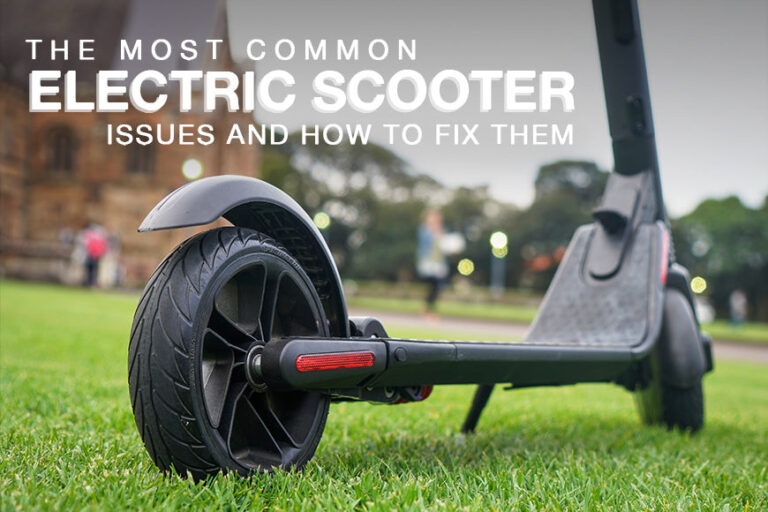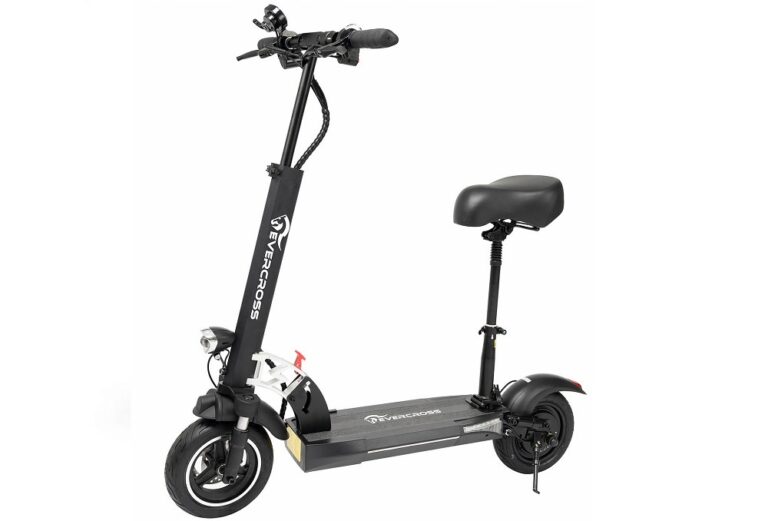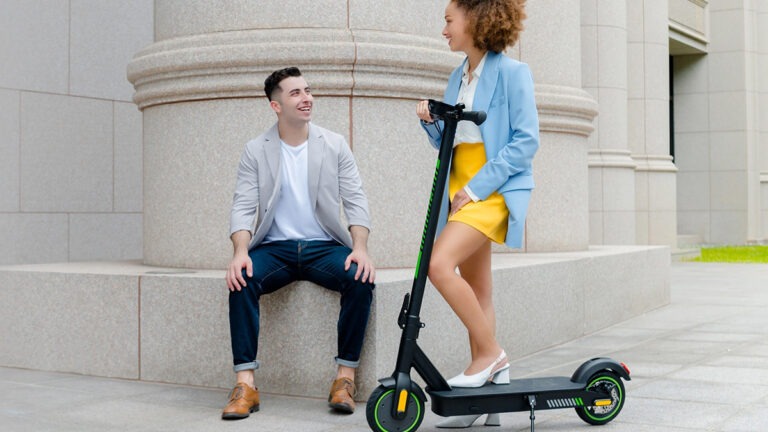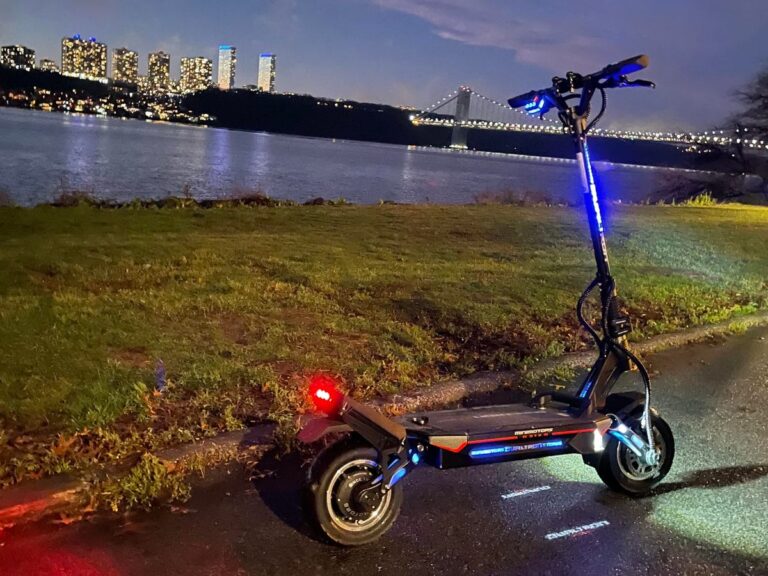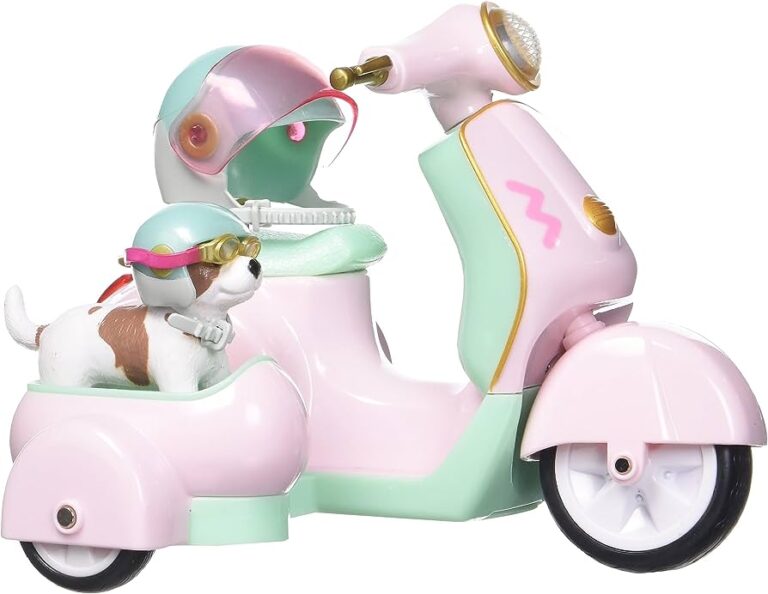Gyroor Scooter Not Turning on: Troubleshooting Tips for Quick Fixes
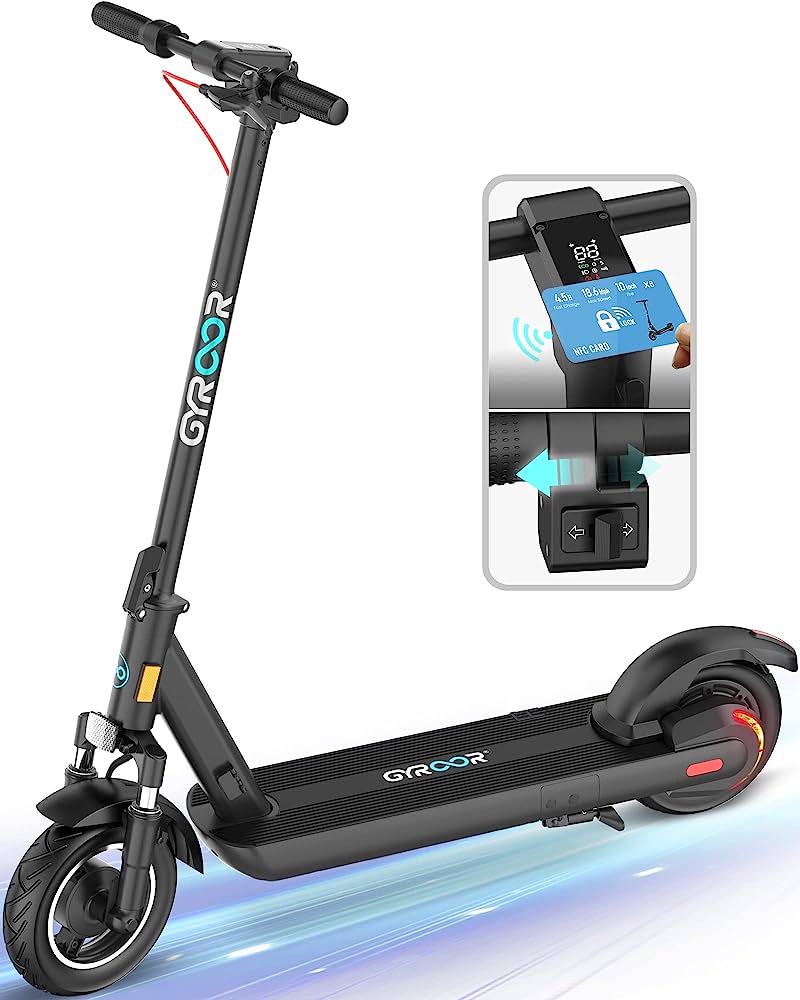
The Gyroor scooter not turning on? Check the battery and connections for any issues.
If your Gyroor scooter is not turning on, the first thing you should check is the battery and its connections. Make sure the battery is charged and securely connected. If the battery is dead, try charging it using the supplied charger.
If the connections are loose or dirty, clean and tighten them. Check for any frayed or damaged wires as well. If these steps do not resolve the issue, it may be a problem with the controller or motor, and you should contact the manufacturer or a professional for further assistance. By following these steps, you can troubleshoot and address the problem of your Gyroor scooter not turning on efficiently.
Common Issues
If your Gyroor scooter is not turning on, it could be due to a variety of common issues. Check the battery, power switch, and wiring connections to troubleshoot the problem and get your scooter up and running again.
If you’re facing issues with your Gyroor Scooter not turning on, there are a few common culprits that could be the cause. In this section, we’ll explore these common issues and provide some insights to help you troubleshoot the problem.
Battery Not Charged:
- Ensure that the battery is properly charged before attempting to turn on the scooter.
- Check if the charging cable is securely connected to both the scooter and the power source.
- Verify that the charger is functioning correctly by testing it with another device or using a different charger to charge your scooter.
- If the battery has been unused for an extended period, it may need some time to regain its charge. Leave it plugged in for a few hours and try turning on the scooter again.
Loose Or Disconnected Cables:
- Inspect all the cables connected to the scooter, including the power cable, and make sure they are firmly plugged in.
- Look for any signs of frayed or damaged cables. If you find any, they may need to be repaired or replaced.
- Check the cable connections at both ends to ensure they are secure. Sometimes, cables can become loose during transportation or regular use.
Power Switch Not Functioning:
- Locate the power switch on your Gyroor Scooter. It is typically located near the handlebars.
- Ensure that the power switch is in the “on” position. If it’s already in the “on” position, try toggling it off and on again.
- Sometimes, dirt or debris can accumulate around the power switch, causing it to malfunction. Use a clean cloth or compressed air to clean the switch and its surrounding area.
- If the power switch appears damaged or unresponsive, it may need to be replaced. Contact Gyroor customer support for assistance.
Remember, if you’re still experiencing issues with your Gyroor Scooter not turning on after trying these troubleshooting steps, it’s recommended to reach out to Gyroor’s customer support for further assistance. They will be able to provide specialized guidance and help get your scooter up and running again.
Battery Not Charged
Gyroor scooter not turning on? If your battery is not charged, it may be the reason. Ensure the battery is fully charged before attempting to turn on your scooter.
Check Battery Indicator
- Make sure to check the battery indicator on your Gyroor scooter before assuming your scooter is not turning on.
- Look for a small LED light located either on the handlebar or near the charging port.
- If the light is not on or is flashing, it is an indication that your battery is not charged or is experiencing an issue.
- Proceed to the next section to learn how to charge the battery properly.
How To Charge The Battery Properly
- Plug the charger into a power outlet.
- Connect the charging port to the battery port on your Gyroor scooter.
- Ensure a secure connection by checking that the charging port is firmly inserted.
- Wait for the LED light on the charger to turn from red to green, indicating a full charge.
- Charging time may vary, but it is recommended to charge for at least 4-6 hours for optimal performance.
- After charging, disconnect the charger from the power outlet and your scooter.
- Now attempt to turn on your Gyroor scooter again.
Tips For Maximizing Battery Life
- Avoid frequent full discharges of the battery; instead, aim for more frequent partial discharges.
- Try to keep your scooter’s battery level between 20% and 80% if possible.
- Store the scooter in a cool and dry place when not in use to prevent extreme temperature fluctuations that can degrade the battery.
- Avoid exposing the battery to extremely high or low temperatures, as this can affect its performance.
- Regularly clean the battery terminals to ensure a good connection and prevent any buildup that may impede charging.
- If you won’t be using your scooter for an extended period, it is recommended to charge it fully before storing.
- Consult the user manual for any specific battery maintenance advice provided by Gyroor.
By checking the battery indicator, charging the battery properly, and following these tips, you can troubleshoot and maximize the battery life of your Gyroor scooter. Remember to undertake regular battery maintenance to ensure optimal performance and a prolonged battery lifespan.
Enjoy your electric scooter rides with confidence knowing that your battery is in good shape!
Loose Or Disconnected Cables
If your Gyroor scooter is not turning on, one possible issue could be loose or disconnected cables. Make sure to check all the cables and connections to ensure they are securely connected and properly attached.
Inspecting Cables For Damage
When it comes to troubleshooting your Gyroor Scooter’s power issues, one common culprit can be loose or disconnected cables. These cables play a crucial role in enabling the smooth flow of electricity, so it’s essential to ensure they are intact and properly connected.
Here’s how you can inspect your cables for damage:
- Carefully examine the cables: Look for any visible signs of fraying, cuts, or wear on the cables.
- Check the connectors: Inspect both ends of the cables to see if they are securely connected to their respective ports.
- Test for continuity: Measure the resistance of the cables using a multimeter to determine if there are any breaks in the wiring.
- Look for loose connections: Gently wiggle the cables to check if they are firmly attached to the scooter’s components.
By following these steps, you can identify any potential cable issues that might be causing your Gyroor Scooter to not turn on.
Steps To Reconnect Loose Cables
If you find any loose or disconnected cables during your inspection, it’s crucial to reconnect them properly. Here’s a step-by-step guide on how to do it:
- Identify the loose cable: Determine which cable needs to be reconnected based on your inspection.
- Power off the scooter: Before proceeding, ensure that the scooter is turned off to avoid any electrical risks.
- Reconnect the cable: Hold the loose end of the cable and securely plug it back into its corresponding port, applying slight pressure until you hear a click or feel it firmly seated.
- Double-check the connection: Give the cable a gentle tug to confirm that it is securely fastened.
Remember, loosely connected cables can disrupt the electric current flow, leading to power issues. By following these steps, you can swiftly address loose cable problems and potentially resolve the ‘Gyroor Scooter Not Turning On’ issue.
Importance Of Securely Fastening Cables
Securing your scooter’s cables properly is of utmost importance for several reasons. Here’s why it’s crucial to ensure cables are securely fastened:
- Uninterrupted power flow: Properly connected cables ensure a smooth and uninterrupted flow of electricity, allowing your scooter to function optimally.
- Safety first: Loose or disconnected cables can pose safety hazards as they may cause short circuits or electrical shocks. Ensuring secure connections significantly reduces these risks.
- Preventing further damage: Unattended loose cables may cause additional damage to the scooter’s electrical components over time. By securely fastening cables, you can avoid costly repairs down the line.
Remember, always prioritize the proper securing of cables to maintain the efficiency and safety of your Gyroor Scooter.
Power Switch Not Functioning
The Gyroor scooter’s power switch may not be functioning, preventing it from turning on. If you are experiencing this issue, it is important to troubleshoot the power switch to identify and resolve the problem.
Verifying The Power Switch Position
When your Gyroor scooter refuses to turn on, the power switch could be the culprit. Before diving into troubleshooting steps or considering a replacement, it’s crucial to verify the position of the power switch. Ensure you follow these steps to thoroughly check the power switch:
- Check if the power switch is in the “on” position by confirming if it is pushed forward or pressed down.
- Look for any signs of damage, such as a cracked or broken switch.
- Verify if the power switch is securely connected to the scooter’s electrical system.
- Ensure that the scooter’s battery is charged adequately, as a low battery can sometimes prevent the power switch from functioning properly.
Troubleshooting Steps For A Faulty Power Switch
If you’ve verified that the power switch is in the correct position and connected properly, but your Gyroor scooter is still not turning on, it’s time to troubleshoot the problem. Follow these steps to identify and rectify a faulty power switch:
- Inspect the power switch for any signs of debris, such as dirt or dust, which may hinder its functionality. If you find any, carefully clean the switch.
- Check the wiring connected to the power switch for any loose or disconnected connections. If any issues are found, ensure you reconnect them securely.
- Test the power switch with a multimeter to check if it is providing continuity. If the switch fails the continuity test, it may need to be replaced.
- If the scooter has been exposed to water or moisture, it could have damaged the power switch. In such cases, it might be necessary to replace the switch to resolve the issue.
How To Replace A Malfunctioning Power Switch
If you have determined that the power switch is indeed faulty and needs to be replaced, follow these steps to ensure a smooth replacement process:
- Start by purchasing a compatible power switch from an authorized Gyroor dealer or reputable online retailer.
- Before beginning the replacement, ensure the scooter is turned off and disconnected from any power source.
- Locate the existing power switch on your Gyroor scooter. It is typically positioned on the handlebars or the control panel.
- Carefully remove any covers or panels that may be obstructing access to the power switch.
- Disconnect the wiring connected to the faulty power switch, taking care to remember their positions.
- Install the new power switch, reconnecting the wires in the exact same configuration as before.
- Securely fasten the new power switch in place and replace any covers or panels that were removed earlier.
- Finally, switch on the scooter to test if the new power switch functions correctly, ensuring that the scooter turns on smoothly.
Following these troubleshooting steps and replacing a malfunctioning power switch should help resolve the issue of your Gyroor scooter not turning on. If the problem persists, it is advisable to seek professional assistance from a qualified technician or contact Gyroor customer support for further guidance.
Other Possible Causes
The Gyroor Scooter not turning on can be caused by various factors such as a dead battery, faulty wiring, or a malfunctioning power switch. Make sure to check these possible causes before seeking further assistance.
If your Gyroor scooter is not turning on, there could be several other reasons causing this issue. Apart from battery-related problems, here are some potential causes to consider:
- Motor issues: The motor is responsible for powering your scooter’s movement. If there is an issue with the motor, it may prevent the scooter from turning on. Common motor problems include:
- Loose or disconnected motor wires: Inspect the motor wires to ensure they are securely connected. Loose or disconnected wires can disrupt the power flow and prevent the scooter from powering on.
- Motor damage or failure: If the motor is physically damaged or experiencing internal issues, it may not function properly, resulting in the scooter not turning on.
- Controller problems: The controller acts as the brain of the electric scooter, regulating the power flow and enabling its functionality. Controller issues may hinder the scooter’s ability to turn on. Look out for the following controller-related problems:
- Faulty or damaged controller board: A malfunctioning controller board can disrupt the electrical signals and prevent the scooter from starting. Check for any physical damages on the controller board and consider replacing it if necessary.
- Loose or disconnected controller wires: Just like with the motor, loose or disconnected wires can interrupt the power supply from the battery to the controller, rendering the scooter inoperable.
- Wiring defects: Faulty wiring can interfere with the electrical connections required for the scooter to turn on. Check for the following wiring defects:
- Damaged or frayed wires: Inspect the wiring harness for any signs of damage, such as frayed or exposed wires. These issues can cause a short circuit or prevent the proper transmission of power.
- Loose or disconnected wires: Ensure all wiring connections are secure and properly plugged in. Loose or disconnected wires can disrupt the electrical flow and prevent the scooter from powering on.
When troubleshooting why your Gyroor scooter is not turning on, these potential causes should be considered alongside battery-related issues. By examining the motor, controller, and wiring, you can pinpoint the underlying problem and take appropriate steps to resolve it.
Motor Issues
The Gyroor scooter may experience motor issues when it fails to turn on. If you’re facing this problem, troubleshooting steps can help you resolve it and get your scooter up and running efficiently again.
Signs Of A Faulty Motor
- Scooter engine not starting at all: If your Gyroor scooter is not turning on despite multiple attempts, it could be a sign of a faulty motor.
- Intermittent power loss: Another indication of motor problems is when your scooter experiences intermittent power loss during operation. This means that the motor may be shutting off unexpectedly or not providing consistent power output.
- Unusual noises or vibrations: If you notice any strange noises or vibrations coming from the motor area while using the scooter, it could be a sign of motor issues. Unusual sounds such as grinding, squeaking, or rattling should not be ignored, as they may indicate internal motor problems.
Steps To Diagnose Motor Problems
- Check the battery: Start by verifying if the battery is fully charged and securely connected to the motor. Low battery levels or loose connections can prevent the motor from turning on.
- Inspect motor wiring: Examine the wiring connections between the motor and the battery, looking for any loose or damaged wires. Faulty wiring can interrupt the power supply and lead to motor malfunctions.
- Test the throttle: If the throttle is faulty, it may not be sending the correct signals to the motor. Try using a multimeter to check if the throttle is producing the expected voltage output.
- Examine the motor controller: The motor controller regulates the power flow to the motor. Inspect it for any signs of damage or overheating. Faulty motor controllers can cause issues with motor performance.
- Seek professional assistance: If you’re unable to diagnose the motor problems on your own, it’s advisable to reach out to a qualified technician who can assess and repair the motor more accurately.
Repair Or Replacement Options
- Motor repair: In some cases, motor issues can be resolved through repairs. A professional technician can identify the specific problem and perform the necessary repairs, such as replacing damaged wiring or components.
- Motor replacement: If the motor is severely damaged or beyond repair, replacing it may be the best option. Consult with a technician to determine the suitable replacement motor for your Gyroor scooter.
- Warranty considerations: If your Gyroor scooter is still under warranty, check the warranty terms and contact the manufacturer or authorized service center for assistance. Warranty coverage may include motor repairs or replacements at no cost to you.
Remember, addressing motor issues promptly can help maintain the functionality and performance of your Gyroor scooter. Regular maintenance and proper handling of your scooter can also help prevent future motor problems.
Controller Problems
Having trouble turning on your Gyroor scooter? It may be due to controller problems. Get your scooter up and running again with our expert solutions.
How The Controller Works:
The controller is a crucial component of your Gyroor scooter, responsible for directing the motor and controlling its speed. It serves as the central hub for receiving signals from the user and relaying them to the motor. When you press the throttle, the controller processes the input and initiates the scooter’s movement.
Understanding how the controller works can help you diagnose any issues that may arise.
Indicators Of A Malfunctioning Controller:
Recognizing the signs of a malfunctioning controller can help you identify and resolve problems quickly. Here are some common indicators to look out for:
- Unresponsive motor: If your scooter fails to move despite pressing the throttle, it could indicate a controller problem.
- Inconsistent speed: If your scooter experiences sudden speed changes or fluctuations, it may be due to a malfunctioning controller.
- Delayed response: If there is a noticeable delay between pressing the throttle and the scooter accelerating, the controller could be at fault.
Troubleshooting Guide For Controller Issues:
If you suspect that the controller is causing your scooter to malfunction, try the following troubleshooting steps:
- Check connections: Ensure that all the connections between the controller and other components are secure and properly plugged in. Loose connections can lead to communication failures between the controller and the motor.
- Inspect wiring: Examine the wiring for any visible signs of damage or fraying. If you notice any issues, consider replacing the damaged wires.
- Test the throttle: The throttle is directly linked to the controller. If the throttle itself is faulty, it can affect the performance of the controller. Test the throttle by disconnecting it from the controller and checking if it operates smoothly.
- Reset the controller: Sometimes, a simple reset can resolve minor controller issues. Locate the reset button on the controller and press it for a few seconds. This may help clear any temporary glitches.
- Seek professional assistance: If you have followed the troubleshooting steps mentioned above and are still experiencing controller problems, it may be best to seek the help of a professional. They will have the expertise to diagnose and repair the issue effectively.
By understanding how the controller functions, recognizing the signs of a malfunctioning controller, and following the troubleshooting guide, you can fix many common issues related to your Gyroor scooter’s controller. Remember to prioritize safety while performing any troubleshooting steps and consult an expert if needed.
Wiring Defects
One common issue with the Gyroor scooter is wiring defects, which can prevent it from turning on. However, this can be easily resolved by checking the wiring connections and ensuring they are properly secured and functioning. If the problem persists, it is advisable to contact the manufacturer for further assistance.
Importance Of Inspecting Wiring
Inspecting the wiring of your Gyroor scooter is crucial for ensuring a safe and well-functioning ride. Wiring defects can lead to various issues, including the scooter not turning on. By understanding the importance of inspecting wiring, you can prevent potential hazards and keep your scooter in optimal condition.
Signs Of
Identifying signs of wiring defects can help you pinpoint the root cause of your scooter not turning on. Here are some common indicators that your scooter’s wiring may be faulty:
- No power: If your scooter fails to power on, it could indicate a wiring problem. Check if the battery is charged and test other electrical components to rule out other issues.
- Inconsistent power supply: If your scooter turns on intermittently or experiences sudden power loss, it could be a sign of wiring defects. Faulty connections or frayed wires may disrupt the electrical system.
- Burnt or damaged wires: Inspect the wiring carefully for any signs of burning, melting, or physical damage. These are clear indicators of wiring defects that need immediate attention.
- Sparks or smoke: If you notice sparks or smoke coming from the wiring while attempting to turn on the scooter, it is a serious safety concern. Discontinue use immediately and seek professional repair.
- Unusual noises: Strange buzzing, crackling, or humming noises when turning on the scooter may point to wiring issues. It is important to investigate further to prevent potential accidents.
Steps For Resolving Wiring Issues
Resolving wiring issues can save you from the frustration of a non-functioning Gyroor scooter. Here are some steps to follow when dealing with wiring defects:
- Safety first: Before inspecting or repairing any wiring, ensure the scooter is turned off and disconnected from the power source to prevent electric shocks.
- Visual inspection: Examine the wiring thoroughly, checking for loose connections, damaged wires, or burnt components. Pay close attention to areas where the wiring is exposed or susceptible to wear and tear.
- Tighten connections: If loose connections are identified, use the appropriate tools to secure them. Ensure all wires are properly connected to their respective terminals and components.
- Replace damaged wires: In the presence of damaged or burnt wires, it is essential to replace them. Obtain the correct replacement wires and follow the manufacturer’s guidelines for proper installation.
- Seek professional assistance: If you are unsure or uncomfortable with handling wiring repairs, it is recommended to seek professional help. Certified technicians have the expertise and experience to tackle complex wiring issues.
Remember, ensuring the integrity of your scooter’s wiring is crucial for proper functioning and your safety. Regularly inspecting and addressing wiring defects can help prevent problems and keep you riding smoothly.
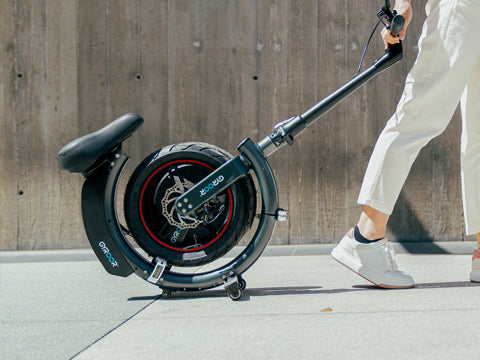
Credit: gyroorboard.com
Frequently Asked Questions For Gyroor Scooter Not Turning On
What To Do If My Hoverboard Won’T Turn On?
Is your hoverboard not turning on? Follow these steps to troubleshoot the issue.
How Do You Turn On A Gyroor Hoverboard?
To turn on a Gyroor hoverboard, locate the power button and press it. That’s it!
Why Wont My Hoverboard Turn On Without A Charger?
The hoverboard needs a charger to power it on because it relies on an external power source.
Why Is The Red Light Blinking On My Gyroor Hoverboard?
The red light blinks on your Gyroor hoverboard as an indicator of a potential issue.
Conclusion
If your Gyroor scooter isn’t turning on, there are several potential reasons for this issue. First, ensure that the battery is fully charged and the power switch is in the “on” position. If the battery is low, connect it to a charger and let it charge for the recommended time.
Additionally, check the connection between the battery and the scooter to ensure it is secure. If the scooter still doesn’t turn on, inspect the fuse to see if it’s blown and needs replacing. It’s also worth checking if there are any loose wires or damaged components that may be causing the problem.
If you’ve tried all these troubleshooting steps and the issue persists, it’s best to contact Gyroor customer support for further assistance. Remember, regular maintenance and care will prolong the lifespan of your scooter and help prevent issues like this from occurring.

